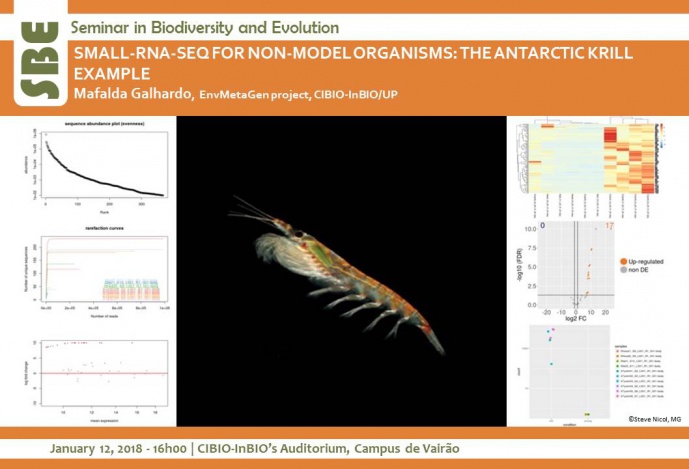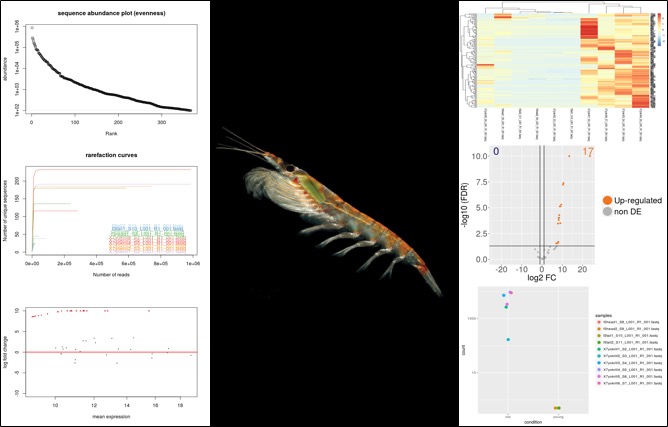SMALL-RNA-SEQ FOR NON-MODEL ORGANISMS: THE ANTARCTIC KRILL EXAMPLE


Small-RNAs are a diverse group of non-coding RNA molecules with length ≤ 250 bp. In Eukaryotes, non-coding RNA represent a large fraction of genomic product, reaching ~98% of transcriptional output in humans [Mattick, 2001]. Small-RNAs are involved in a wide range of cellular functions, namely protein synthesis (tRNA, rRNA, etc.) and regulation, including control of the gene expression and of the chromatin conformation (miRNAs, siRNAs, piRNAs, etc.). They are expressed gender- and tissue-/cell-type-specifically and implicated in many diseases. A class of small-RNAs that has been particularly studied in recent years are microRNAs (miRNAs), with 18-25nt of length and involved on the post-transcriptional regulation of gene expression via their complementary binding to mRNAs and targeting to degradation or repressing their translation.
In this context, we were interested in profiling the small-RNome of the Antarctic krill (Euphausia superba), a non-model organism with a high impact on the Ocean’s ecosystem, but with very limited genomic resources and lacking a sequenced genome due to its large size (~47Gbp [Jeffery 2012]). Small-RNA-sequencing was done on Antarctic krill samples and we developed an analysis workflow allowing to bypass the alignment to a reference genome, by combining existing tools and methods including quality filtering, clustering of sequences based on similarity, local BLASTs to the reference nucleotide database (NCBI) and differential expression analysis to find sequences with a significantly different abundance between krill larvae and seven-year-old krill samples. I will present the analysis workflow and results showing the number and abundance of sequences obtained through a small-RNA-sequencing experiment on Antarctic krill samples, together with their likely functions and putative targets through BLASTs and network visualization.
Mafalda Galhardo studied Biochemistry (BSc) after which she was very curious about how cells and organisms process and integrate so many different inputs, so she went on studying Systems Biology (MSc). During her PhD, she performed an integrated analysis of human adipocyte differentiation, focusing on metabolic changes and transcript-level regulation by 3 down-regulated microRNAs and 3 transcription factors key to adipogenesis. She also looked into the relationship between the regulatory load of a gene and its likelihood of being related to a disease. Her interests include bioinformatics and data analysis to study topics such as genomic and epigenomic regulation and their interplay with metabolism and diseases.
[Host: Pedro Beja, EnvMetaGen project]
Image credits: Steve Nicol, MG